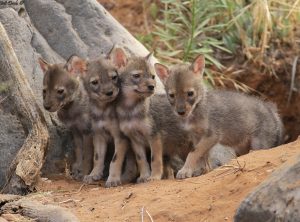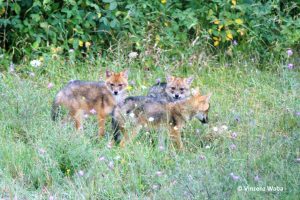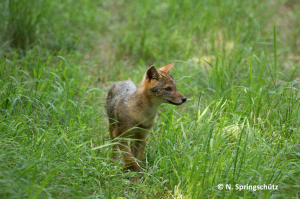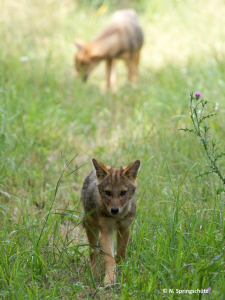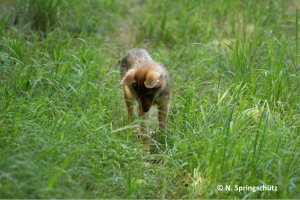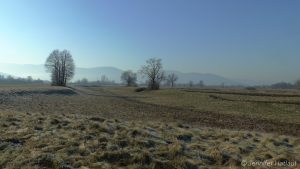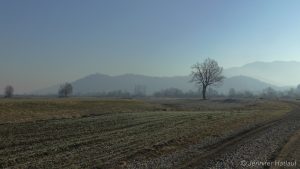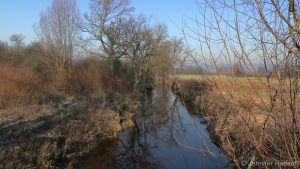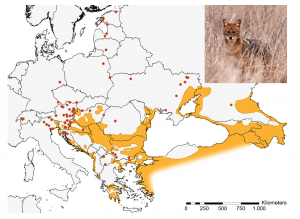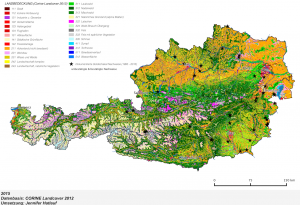Learn more about the biology and ecology of this animal.
Text: Jennifer Hatlauf
common name: golden jackal
scientific name: Canis aureus
shoulder height: 44 – 50 cm
body length: up to 105 cm
mass: female on average 10kg/ male on average 11kg (there are also individuals with up to 15 kg)
tail length: 20 – 30 cm, compared to the body the tail is quite short.
With a shoulder height of 44 – 50 cm, a body weight of up to 15 kg and a body length of about 105 cm, the golden jackal is one of the medium sized carnivores of the family Canidae. Its coat is yellowish-gray (also described as reddish), in the area of the back and the tail tip dark and lateral as well as on the legs gold-colored. His brown face mask is marked by a distinct white drawing around the mouth and neck.
The tracks of the golden jackal resembles that of a great red fox, but the middle bales are fused together in the lower part. This applies to both the fore and the hind extremities.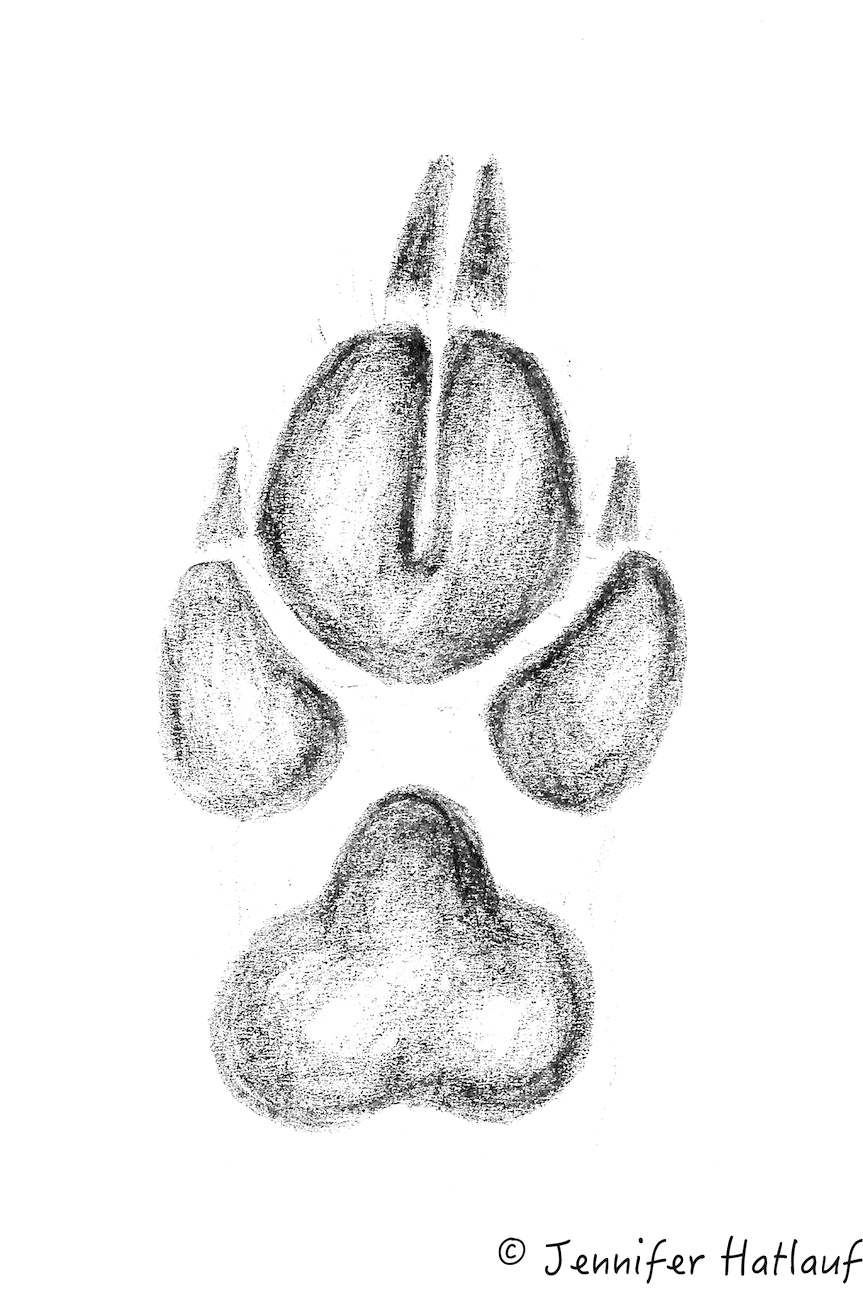
Would you like to learn more about the golden jackal? Continue reading…
feeding ecology
![]() The golden jackal is a food generalist and opportunist who can adapt very well to the season, habitat and available resources.
The golden jackal is a food generalist and opportunist who can adapt very well to the season, habitat and available resources.
The main food resources are small to medium mammals; as well as amphibians, insects, fish, often carcasses, plants and anthropogenic food resources (in some regions slaughterhouse waste)
In heavily hunted areas, the golden jackal uses leftovers or carcasses of not found ungulates as a main food resource.
reproduction
The reproduction period of the golden jackal in the european area is in January and February. The litter size is usually about four to five young ones (rarely up to 12). As a rule, a so called “helper” is staying with the parents in order to help with the care of the next offspring.
The golden jackal is crepuscular and nocturnal and lives in a flexible social system, in which, the partners remain together for a lifetime, mark their territory together and hunt together.
- Jungtiere in Israel (Irit Drob / Fiatal példány Izraelben)
- Evidence of a litter in August 2007 in the area of the national park Neusiedler See – Seewinkel
- Juvenile
- Juvenile
- Juvenile
habitat
The golden jackal is flexible in its habitat selection and can adapt well to different circumstances.
Richly structured agricultural landscape as well as wet areas provide good conditions for the golden jackal.
Adequate coverage and hiding places during the day play an important role in the vicinity of the settlement, but in protected areas with many resting opportunities, this is rather incidental.
- golden jackal habitat in Slovenia
- golden jackal habitat in Slovenia
- golden jackal habitat in Slovenia
distribution
global
In the literature, the natural distribution area of the golden jackal is described as an extensive area from North Africa over Asia to Central, Eastern and Southern Europe. A recent genetic study by Koepfli et al. (2015) draws the conclusion that the african and eurasian golden jackals are not that closely related as supposed.
The african golden jackal is therefore more related to the wolf (Canis lupus) than to the golden jackals in Europe and Asia. Therefore, a new taxonomic differentiation of the species into “african golden wolf” (Canis anthus) and “eurasian golden jackal” (Canis aureus) is proposed.
- Trouwborst et al. 2015
Austria
Since 1987 there have been reportings of golden jackals in Austria. in 2007 there was the first reproduction in the national park Neusiedler See – Seewinkel. A collection of previous proofs is shown on the map.
- Verbreitung Österreich
Citation:
Hatlauf, J (2021): Biology of the golden jackal. Accessed at (DATE) at Goldschakalprojekt Österreich: https://www.goldschakal.at/biologie/
